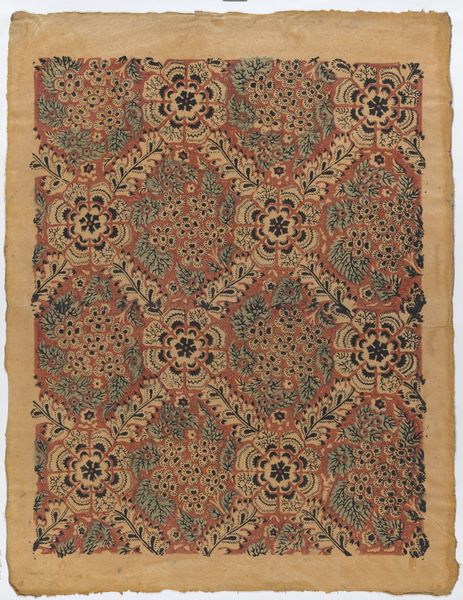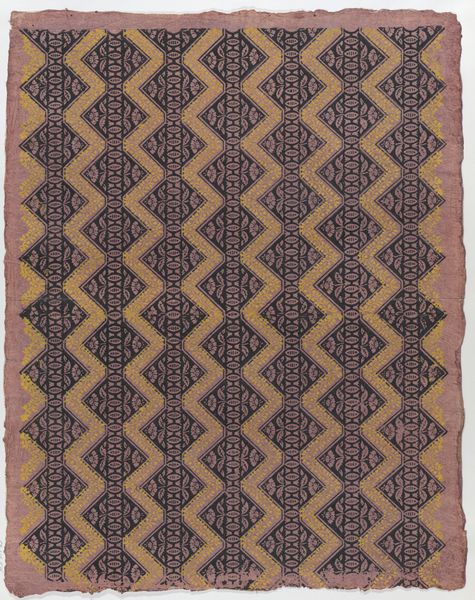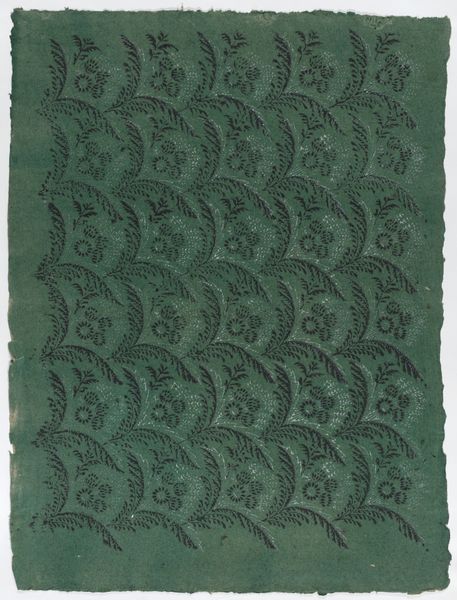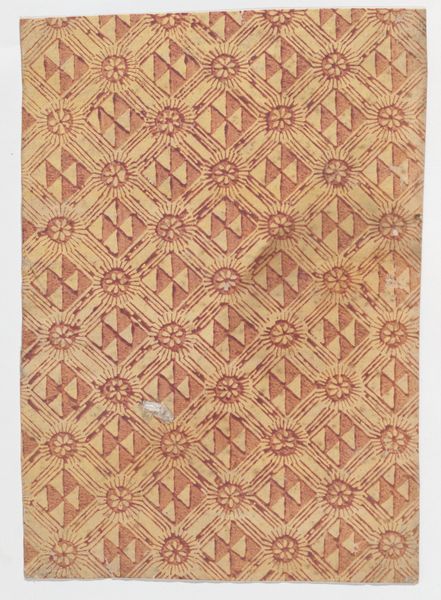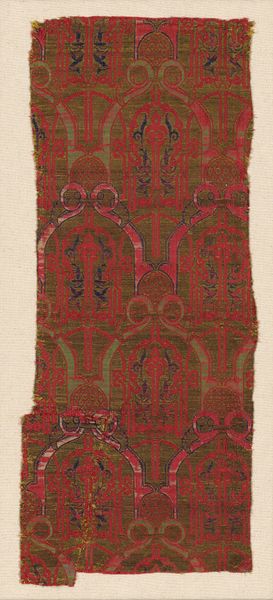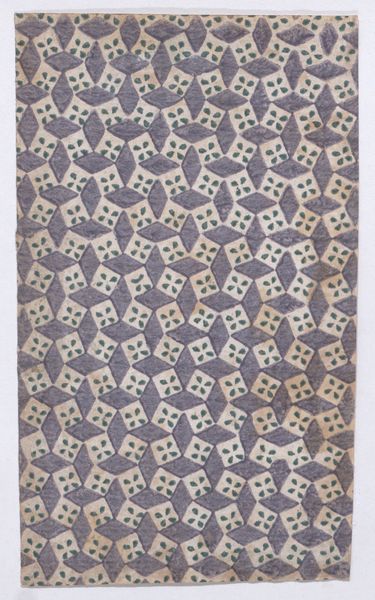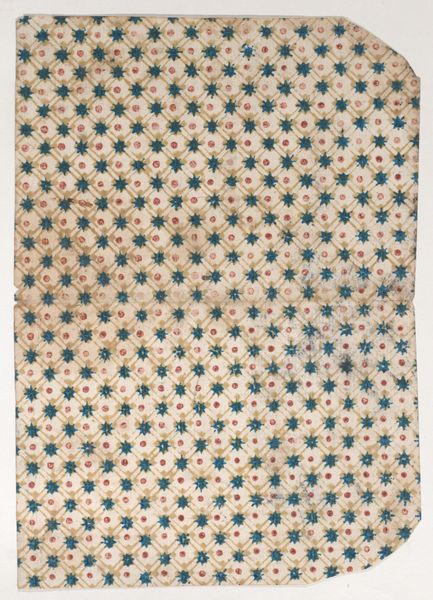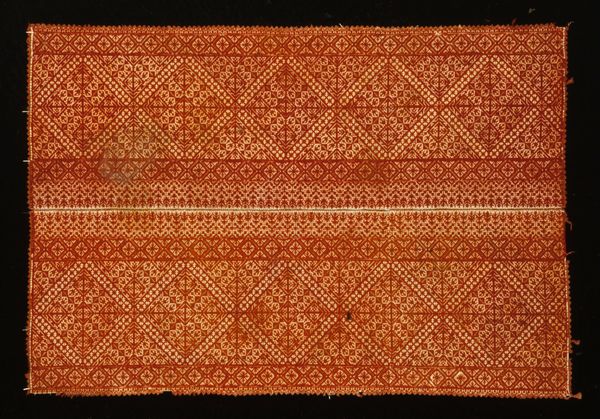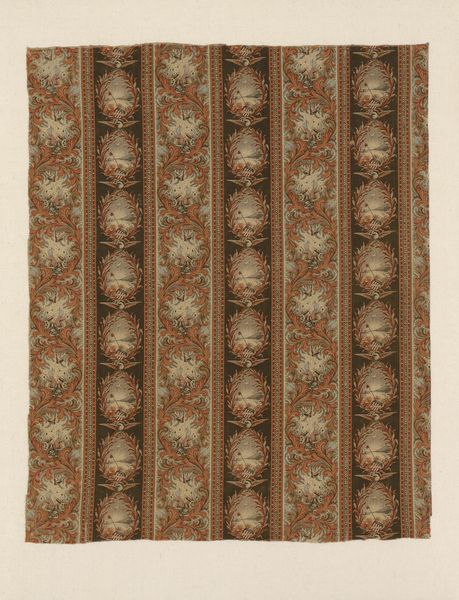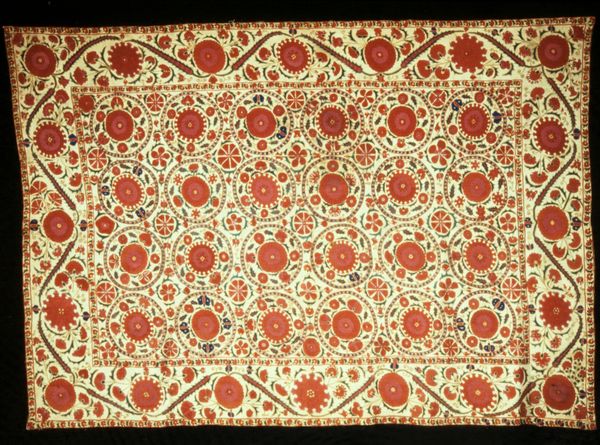
Sheet with overall floral pattern on green background 1775 - 1875
0:00
0:00
drawing, print, textile, paper
#
drawing
#
organic
# print
#
textile
#
paper
#
organic pattern
#
decorative-art
Dimensions: Sheet: 18 3/4 × 14 7/16 in. (47.6 × 36.7 cm)
Copyright: Public Domain
Curator: This piece immediately draws the eye. It’s such a dense, verdant design, a tightly packed plane of abstracted flora against a lively green background. Editor: Indeed, a charming chaos, almost like an elaborate botanical tapestry woven onto paper. We are looking at a textile design titled “Sheet with overall floral pattern on green background,” estimated to have been created between 1775 and 1875. The artist is unknown, but it resides here at the Metropolitan Museum of Art. It combines drawing and print techniques on paper. Curator: What intrigues me most is the symbolic weight these kinds of floral patterns carried then. Flowers were hardly ever ‘just flowers’. Each bloom, each arrangement spoke volumes of love, loss, and social aspiration. Seeing it now, separated from its intended context of, say, a printed dress, does it still whisper secrets? Editor: Well, these repeated, stylized motifs would have resonated within specific decorative art trends of its time, embodying class aspirations through affordable reproductions. Imagine a room filled with furniture, clothing, and textiles all sharing related patterns, unified through similar patterns— a sort of visual language of belonging. But who determined these symbolic grammars and to what purpose? That's always the fascinating question. Curator: So you're suggesting this was part of a broader effort to define status, communicating social hierarchies and cultural values. These objects did not simply exist but helped to establish a collective sense of identity... Editor: Precisely. Take the rose-like blossoms. They can signify so much; desire, romantic love, feminine ideals. What statements about those things did this pattern make? Or perhaps subvert? Considering this design's repetitive, almost industrial, nature allows one to consider how accessibility might impact a pattern's power. Curator: What do you make of that distinctive green used as both backdrop and subtly integrated into the pattern itself? Could this hue act as an emotional undercurrent, suggesting notions of harmony, nature, or growth within a social climate defined by industrial advancement? Editor: The interplay could definitely spark such reflection. And from there, we arrive back to how design serves—or complicates—broader power structures of that period. Curator: Exactly, that push and pull is vital to how an object persists across decades and evolves in its meanings. A delightful pattern to unlock stories from. Editor: Indeed. It causes us to consider a much bigger picture, interwoven between material and historical significance.
Comments
No comments
Be the first to comment and join the conversation on the ultimate creative platform.
